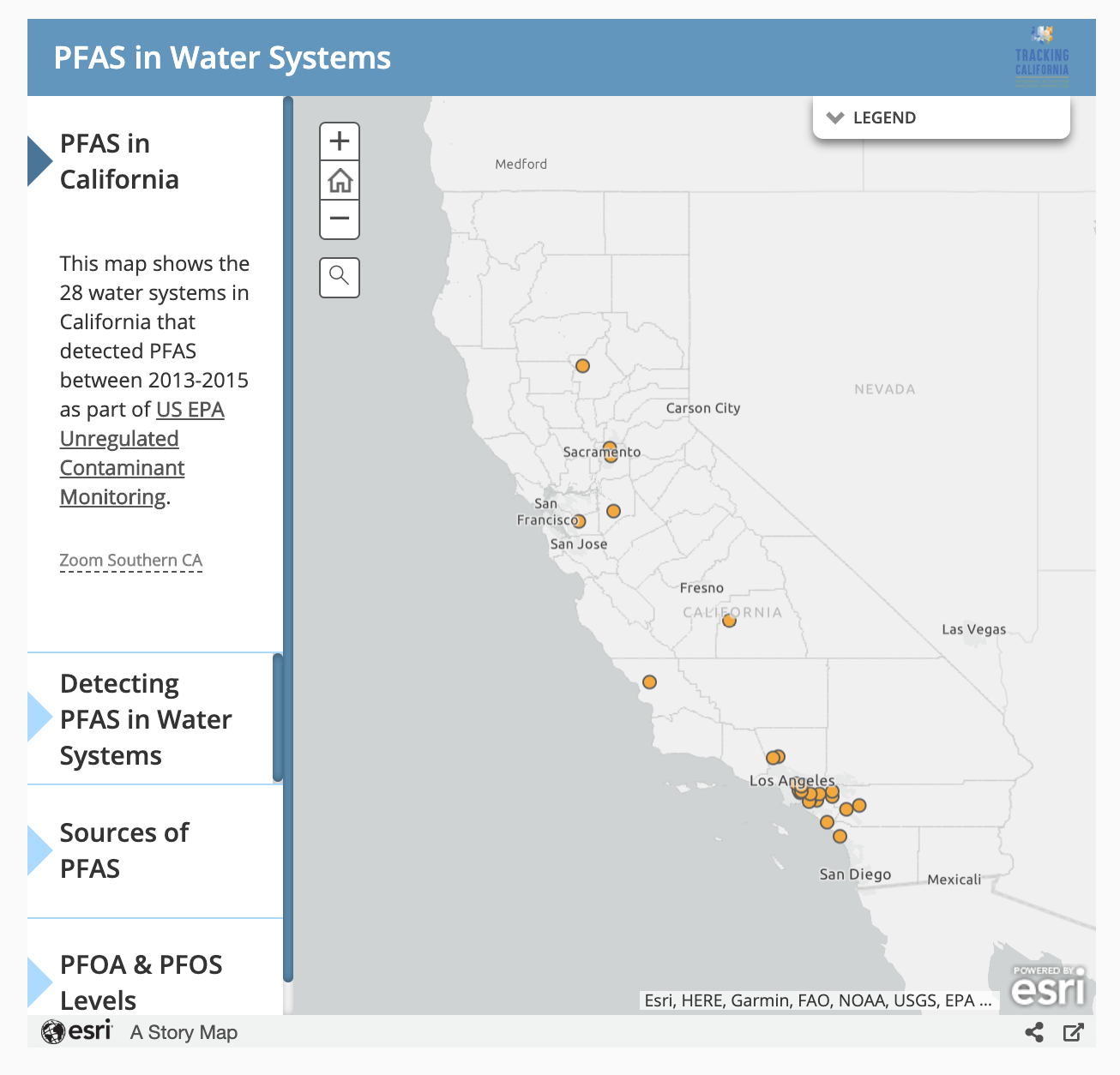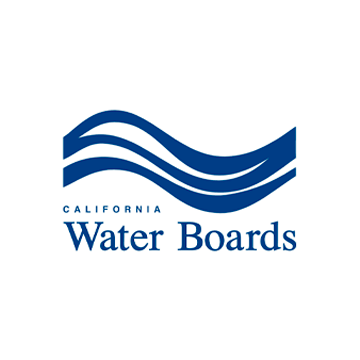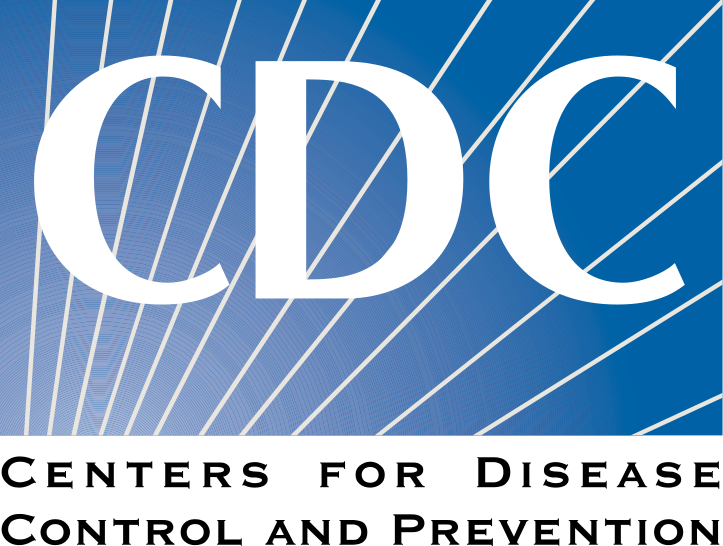PFAS, or perfluoroalkyl and polyfluoroalkyl substances, are a group of man-made chemicals. PFAS have been used in manufacturing and consumer products in the U.S. since the 1940s. There are thousands of chemical compounds that are classified as PFAS, such as Perfluorooctanoic acid (PFOA) and perfluorooctane sulfonate (PFOS).
Because of their stable chemical structure, PFAS do not break down easily and accumulate in the environment and in humans over time. Some types of PFAS, like PFOA and PFOS, have been phased out of major manufacturing in the U.S. due to their environmental persistence and health concerns. However, imported goods may still contain PFOA or PFOS. Thousands of other PFAS, such as ADONA and GenX chemicals, are still manufactured and used in the U.S.
The most common exposure pathway to PFAS exposure is through our drinking water. PFAS contamination in drinking water is usually localized and is often associated with a specific water treatment facility. Runoff from manufacturing facilities, landfills, and wastewater treatment plants may contaminate water sources.
A certain type of fire-fighting foam used for petroleum-related fires is also a known source of PFAS. Airports operating Aircraft Rescue and Firefighting (ARFF) departments and petroleum refineries using this type of foam can possibly contaminate nearby water sources.
In California, the Department of Defense identified some military airports with fire-fighting training facilities as PFAS contamination sites.
Other sources of PFAS include:
- Food: grease-proof packaging, processing equipment, contaminated soil or water.
- Household products: stain- and water-repellent clothes, stain-resistant carpets, nonstick pans, some polishes, waxes, paints, cleaning products.
- Manufacturing facilities or industries: chrome plating, electronics production, oil recovery.
- Living organisms: PFAS accumulate and persist in fish and animals.
PFAS Across California
Tracking California provides a series of interactive maps on PFAS contaminants in drinking water systems across the state. The maps highlight contamination detections across two sampling periods, types of contaminants detected, and potential sources of these contaminants.

PFAS and Human Health
Exposure to PFAS has been linked to multiple adverse health outcomes in lab animal studies and in humans (ATSDR, 2018; Dong et al., 2009; IARC, 2017; NTP, 2016; OEHHA 2019). Much of the research on health effects of PFAS exposures focuses on two types of PFAS: PFOA and PFOS. Some health problems that have been associated with PFAS exposure include: increased cholesterol levels, low infant birth weight, reproductive and development issues, liver damage, decreased immune response, asthma, tumors and cancer, and thyroid disease.
Most reported health problems have been a result of exposures to high levels of PFAS (such as in a workplace setting, or a community with very high levels in drinking water), or exposures over long periods of time. There are many other factors and exposures that can increase a person's risk for certain health outcomes, like cancers. This makes it difficult for researchers to determine whether or not PFAS cause these health outcomes. While there is evidence that exposures to PFAS are associated with health problems, more research is needed.
Based on current research and health concerns, the US EPA established a national lifetime health advisory level for two of the most well-studied PFAS chemicals, PFOA and PFOS, in drinking water. In California, the Office of Environmental Health Hazard Assessment (OEHHA) recommended Notification Levels for PFOA and PFOS that are considerably lower than the EPA Advisory Level.
Who is Vulnerable to PFAS?
Individuals who are directly exposed to high concentrations of PFAS, such as firefighters and workers in certain manufacturing facilities, are at higher risk of both immediate and long-term health outcomes.
If your drinking water system draws water from a source near a manufacturing facility, landfill, airfield, refinery, or firefighter training facility, your water system may be at risk of PFAS contamination.
Contact your water system directly if you have questions or concerns about PFAS in your drinking water.
PFAS Monitoring and Regulation
Federal Monitoring and Regulation
PFAS are not currently regulated in drinking water; however, under the Safe Drinking Water Act, the US EPA has issued health advisories for PFAS in drinking water.
- In 2009, the US EPA set provisional health advisories for PFOA (40 parts per trillion) and PFOS (20 parts per trillion) in drinking water.
- In 2016, US EPA set a Lifetime Health Advisory level of 70 parts per trillion (ppt) for PFOA and PFOS, individually or combined.
- In 2022, US EPA announced updated interim Lifetime Health Advisory levels for PFOA (0.004 ppt) and PFOS (0.02 ppt) and created Lifetime Health Advisory levels for PFBS (2000 ppt) and GenX (10 ppt).
These levels are based on evidence of cancer, liver, immune system, and developmental toxicity in human and animal studies.
The US EPA is currently working on establishing a National Primary Drinking Water Regulation (NPDWR) for PFOA and PFOS, as well as for four additional PFAS and their mixtures.
US EPA Unregulated Contaminant Monitoring
The US EPA sets rules and requirements for water systems to periodically monitor for select contaminants that are not yet regulated by the Safe Drinking Water Act.
Between 2013-2015, all large water systems and some small systems were required to test for PFAS in compliance with the third US EPA Unregulated Contaminant Monitoring Rule (UCMR3). Around 450 California public water systems tested for six types of PFAS using EPA Method 537. UCMR3 monitoring results are publicly available.
In 2021, the US EPA announced the fifth Unregulated Contaminant Monitoring Rule (UCMR5) which requires public water systems to test for 29 types of PFAS using EPA Method 533 and EPA Method 537.1 from January 2023 and December 2025. UCMR5 monitoring data are available here.
State Monitoring and Regulation
The California Division of Drinking Water has also established health-based Notification Levels (NLs) and Response Levels (RLs) for PFAS in drinking water based on the Office of Environmental Health Hazard Assessment's recommendations.
| PFAS | Notification Level (ppt) | Response Level (ppt) |
|---|---|---|
| PFBS | 500 | 5,000 |
| PFHxS | 3 | 20 |
| PFOS | 6.5 | 40 |
| PFOA | 5.1 | 10 |
If concentrations exceed the Notification Levels, a water system is required to notify their governing boards or local agencies under California's Health and Safety Code 116455. If concentrations exceed the Response Levels, a water system is required to take the source out of service, provide treatment, or notify their consumers under California's Health and Safety Code 116378 (effective January 1, 2020).
California Water Boards PFAS Investigation Orders
In March 2019, the State Water Resource Control Board's Division of Drinking Water ordered some water systems to test for PFAS under health and safety codes in California's Safe Drinking Water Act. Selected public water systems tested for up to 18 types of PFAS using EPA Method 537 Rev 1.1 or Method 537.1.
The California Water Board's first phase of monitoring focused on public water systems that were within one mile of municipal solid waste landfills, two miles of airports with fire training and response sites, and one mile of previously contaminated water systems tested under UCMR3.
In 2021, monitoring for PFAS in drinking water expanded to systems nearby to United States Department of Defense sites. In 2023, monitoring began for drinking water system sources in proximity to confirmed PFAS detections and are testing for 25 types of PFAS using EPA Method 533.
Other PFAS Resources

US EPA PFAS Information
US EPA provides basic information on PFAS in addition to data, tools, research, and other resources.

State Water Resources Control Board (SWRCB)
SWRCB is responsible for regulating public drinking water systems in California. They have established Notification and Response Levels for PFAS in California and offer information on treatment techniques used to remove PFAS from drinking water.

Office of Environmental Health Hazard Assessment (OEHHA)
OEHHA conducts scientific evaluations of health risks associated with hazardous substances in the environment. They developed recommendations for the Division of Drinking Water of the SWRCB to establish scientifically-based Notification and Response Levels for PFAS in California.

Agency for Toxic Substances and Disease Registry (ATSDR)
ATSDR is a federal public health agency of the U.S. Department of Health and Human Services. ATSDR and the Centers for Disease Control and Prevention (CDC) have conducted several health studies and exposure assessments on PFAS across the country.

Environmental Working Group (EWG)
EWG is a non-profit organization made up of scientists, policy experts, lawyers, communication experts and programmers who seek to protect human health and the environment. EWG developed a national interactive map of PFAS in drinking water and confirmed PFAS contamination sites.

American Public Health Laboratories (APHL)
APHL represents state and local governmental health laboratories that monitor, detect and respond to health threats. They provide a detailed history of PFAS in the U.S. and the current state of testing methods, policies, and public perception surrounding PFAS at the national and state level.
